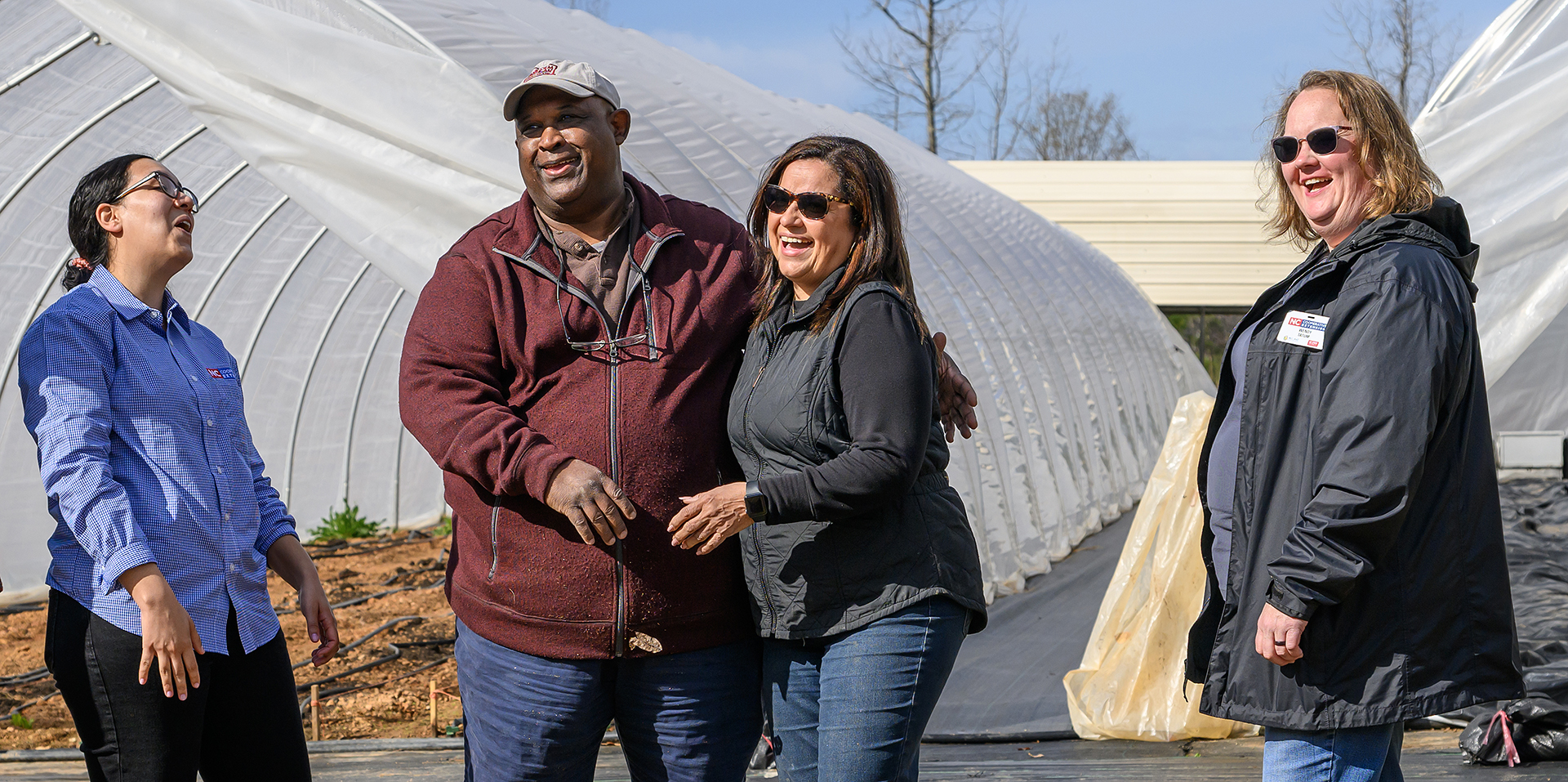Newman’s Own and Novo Nordisk have funded a program of Gen Z Native Americans who are fighting tribal food insecurity – Fortune

Initiative Overview: The Indigenous Tomorrows Fund and Sustainable Development
A new philanthropic initiative, the Indigenous Tomorrows Fund, has been established to empower young Native American leaders in the effort to achieve key Sustainable Development Goals (SDGs) within tribal communities. Supported by funding from Newman’s Own Foundation and Novo Nordisk, the program directly addresses persistent food insecurity and health disparities through a community-led, participatory model that aligns with the principles of self-determination and sustainable development.
Core Objective: Addressing SDG 2 (Zero Hunger) and SDG 3 (Good Health and Well-being)
The fund’s primary focus is on mitigating food insecurity and promoting wellness, directly contributing to SDG 2 (Zero Hunger) and SDG 3 (Good Health and Well-being). Indigenous communities in the U.S. experience food insecurity at approximately twice the rate of white households, a challenge the initiative seeks to overcome.
- Food Sovereignty: The program supports projects that revive traditional food practices and promote food sovereignty, a critical component for achieving Target 2.1 (end hunger and ensure access to safe, nutritious food).
- Health and Nutrition: In partnership with Novo Nordisk, the fund emphasizes wellness, tackling issues such as child obesity and lack of access to healthy groceries, in line with Target 3.4 (promote mental health and well-being).
- Sustainable Agriculture: Funded projects often involve the cultivation and distribution of culturally significant crops, advancing Target 2.3 (double the agricultural productivity and incomes of small-scale food producers).
A Participatory Model for SDG 10 (Reduced Inequalities)
The initiative’s structure is a significant departure from traditional philanthropy, embodying the principles of SDG 10 (Reduced Inequalities) by ceding decision-making power to the beneficiary community. A council of 21 Indigenous leaders, aged 16 to 24, was given full agency over the grant-making process.
- A pool of $720,000 was allocated for distribution.
- The youth council designed the selection criteria for grant applicants.
- The council evaluated over 400 applications and selected two dozen finalists.
This trust-based approach directly challenges systemic inequities in philanthropy, where less than 0.5% of funding from large U.S. foundations is directed toward Native American-led organizations. By empowering youth, the model promotes Target 10.2 (empower and promote the social, economic and political inclusion of all).
Funded Projects: Local Solutions for Global Goals
The grant recipients are implementing diverse, community-based solutions that connect local action to global sustainability targets.
- SDG 14 (Life Below Water): A collective of Shinnecock women in New York is farming kelp to restore the health of a local bay, an action that directly supports Target 14.2 (sustainably manage and protect marine and coastal ecosystems).
- SDG 15 (Life on Land) & SDG 11 (Sustainable Communities): An Arizona-based community center is growing culturally significant crops like Apache giant squash. This initiative promotes sustainable land management (SDG 15) while training youth and preserving cultural heritage (Target 11.4).
- Intergenerational Knowledge: A common theme among projects is the application of ancestral knowledge and cultural practices to solve modern challenges, ensuring that development is both sustainable and culturally relevant.
Strategic Partnerships and Future Outlook
The Role of SDG 17 (Partnerships for the Goals)
The Indigenous Tomorrows Fund is a prime example of a multi-stakeholder partnership as outlined in SDG 17. The collaboration between corporate foundations (Newman’s Own Foundation, Novo Nordisk) and a community-focused organization (Native Americans in Philanthropy) demonstrates an effective model for mobilizing resources to achieve the SDGs.
Scaling the Impact
Following the success of the pilot program, organizers aim to expand the fund’s reach and impact.
- The goal for the next cycle is to increase the grant pool to $1 million.
- Native Americans in Philanthropy has secured half of the required funding.
- The organization is actively seeking new partners to commit the remaining $500,000, continuing its work under the framework of SDG 17 to build robust partnerships for sustainable development.
Analysis of Sustainable Development Goals in the Article
1. Which SDGs are addressed or connected to the issues highlighted in the article?
-
SDG 2: Zero Hunger
- The article’s central theme is the fight against “persistently high rates of food insecurity in tribal communities.” It discusses the lack of access to adequate, healthy, and culturally significant food, directly aligning with the goal of ending hunger and ensuring food security.
-
SDG 3: Good Health and Well-being
- The article mentions that “Child obesity is high” in these communities and that one of the funding partners, Novo Nordisk, has an “interest in wellness.” The projects aim to improve nutrition and health outcomes, which is a core component of SDG 3.
-
SDG 10: Reduced Inequalities
- The article highlights significant disparities, stating that “American Indian/Alaska Native households still lack access to adequate food at twice the level of white residents” and that “Less than 0.5% of funding from large U.S. foundations goes to Native American nonprofits.” The initiative itself, which empowers young Indigenous leaders to make funding decisions, is a direct effort to reduce inequality and promote inclusion.
-
SDG 14: Life Below Water
- One of the funded projects is a “multi-generational collective of Shinnecock women in New York who farm kelp to clean up a bay.” This effort to use aquaculture to improve marine ecosystem health directly relates to the conservation and sustainable use of oceans and marine resources.
-
SDG 15: Life on Land
- The article describes projects that involve growing “culturally significant crops such as Apache giant squash,” training youth in “hands-on land management,” and “sustainably tending local ecosystems.” These activities support the sustainable use of terrestrial ecosystems and the preservation of biodiversity.
-
SDG 17: Partnerships for the Goals
- The entire initiative is a multi-stakeholder partnership. It involves collaboration between philanthropic foundations (Newman’s Own Foundation, Novo Nordisk), a non-profit coalition (Native Americans in Philanthropy), and the beneficiary community (young Native American leaders), demonstrating a partnership model to achieve sustainable development.
2. What specific targets under those SDGs can be identified based on the article’s content?
-
Under SDG 2 (Zero Hunger):
- Target 2.1: End hunger and ensure access to safe, nutritious and sufficient food. The article’s focus on tackling food insecurity and the lack of “access to adequate food” in American Indian/Alaska Native households directly addresses this target.
- Target 2.2: End all forms of malnutrition. The mention of high rates of “child obesity” connects to this target, as obesity is a form of malnutrition.
-
Under SDG 3 (Good Health and Well-being):
- Target 3.4: Reduce by one third premature mortality from non-communicable diseases through prevention and treatment and promote mental health and well-being. The focus on providing “healthy groceries” and improving nutrition is a preventative measure against non-communicable diseases often linked to obesity and poor diet.
-
Under SDG 10 (Reduced Inequalities):
- Target 10.2: Empower and promote the social, economic and political inclusion of all. The program empowers “21 emerging Indigenous leaders” by giving them agency and decision-making power (“handed the reins almost entirely”) in the philanthropic process, promoting their inclusion.
- Target 10.3: Ensure equal opportunity and reduce inequalities of outcome. The initiative aims to counteract the inequality highlighted by the statistic that Native American households face food insecurity at “twice the level of white residents” and receive disproportionately low philanthropic funding.
-
Under SDG 14 (Life Below Water):
- Target 14.1: By 2025, prevent and significantly reduce marine pollution of all kinds. The project involving kelp farming specifically aims to “clean up a bay,” which contributes to reducing marine pollution.
-
Under SDG 15 (Life on Land):
- Target 15.1: Ensure the conservation, restoration and sustainable use of terrestrial and inland freshwater ecosystems. The projects focused on “hands-on land management” and “sustainably tending local ecosystems” align with this target.
-
Under SDG 17 (Partnerships for the Goals):
- Target 17.17: Encourage and promote effective public, public-private and civil society partnerships. The collaboration between private foundations (Newman’s Own, Novo Nordisk) and a civil society group (Native Americans in Philanthropy) is a clear example of this type of partnership.
3. Are there any indicators mentioned or implied in the article that can be used to measure progress towards the identified targets?
-
Indicator for Target 2.1 (Prevalence of food insecurity):
- The article explicitly states that “American Indian/Alaska Native households still lack access to adequate food at twice the level of white residents.” This prevalence rate is a direct indicator of food insecurity within a specific population.
-
Indicator for Target 2.2 (Prevalence of malnutrition):
- The article mentions that “Child obesity is high.” The rate of childhood obesity in the target communities serves as an indicator for malnutrition.
-
Indicator for Target 10.3 (Financial flows to marginalized groups):
- The article provides a specific statistic: “Less than 0.5% of funding from large U.S. foundations goes to Native American nonprofits.” This percentage is a quantifiable indicator of the financial inequality in philanthropic giving.
-
Indicators of Programmatic Scale and Engagement:
- The article implies several process indicators that measure the initiative’s reach and success:
- Total financial resources mobilized: “$720,000” in the current pool, with a goal to “increase next year’s pot to $1 million.”
- Number of grants awarded: “two dozen finalists to split a pool of $720,000.”
- Level of interest and need: The inaugural cycle “received more than 400 applications.”
- Number of youth empowered: “21 emerging Indigenous leaders” were involved in the grantmaking process.
- The article implies several process indicators that measure the initiative’s reach and success:
4. Summary Table of SDGs, Targets, and Indicators
| SDGs | Targets | Indicators |
|---|---|---|
| SDG 2: Zero Hunger |
|
|
| SDG 3: Good Health and Well-being |
|
|
| SDG 10: Reduced Inequalities |
|
|
| SDG 14: Life Below Water |
|
|
| SDG 15: Life on Land |
|
|
| SDG 17: Partnerships for the Goals |
|
|
Source: fortune.com

What is Your Reaction?
 Like
0
Like
0
 Dislike
0
Dislike
0
 Love
0
Love
0
 Funny
0
Funny
0
 Angry
0
Angry
0
 Sad
0
Sad
0
 Wow
0
Wow
0




















































.jpg.webp?itok=0ZsAnae9#)


























